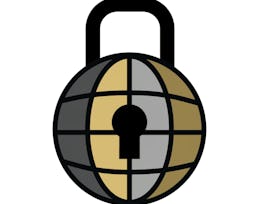This course will examine the drinking water and electricity infrastructures, and various policies that have been developed to help guide and strengthen their cybersecurity programs. The drinking water and electricity infrastructures are two of fourteen subsectors comprising what are known as "lifeline infrastructure". The 2013 National Infrastructure Protection Plan identifies four lifeline infrastructure sectors: 1) water, 2) energy, 3) transportation, and 4) communications. These sectors are designated "lifeline" because many other infrastructures depend upon them. The drinking water subsector is part of the water sector, and the electricity subsector is part of the energy sector. Both subsectors are overseen by the Department of Homeland Security National Protection and Programs Directorate which manages the DHS National Infrastructure Protection Program. The NIPP employs a five-step continuous improvement program called the Risk Management Framework. NIPP implementation is overseen by DHS-designated Sector-Specific Agencies staffed by various Federal departments. The Sector-Specific Agencies work in voluntary cooperation with industry representatives to apply the Risk Management Framework and document results in corresponding Sector-Specific Plans. The program began in 2007 and the most recent Sector-Specific Plans were published in 2016. In February 2013, President Obama issued Executive 13636 directing the National Institute of Standards and Technology to develop a voluntary set of recommendations for strengthening infrastructure cybersecurity measures. EO13636 also asked Federal agencies with regulating authority to make a recommendation whether the NIST Cybersecurity Framework should be made mandatory. The Environmental Protection Agency who is both the SSA and regulatory authority for the drinking water subsector recommended voluntary application of the NIST Cybersecurity Framework. The Department of Energy who is both the SSA and regulatory authority for the electricity subsector replied that it was already implementing the Electricity Subsector Cybersecurity Capability Maturity Model, which indeed was what the NIST Cybersecurity Framework was based on. The Department of Energy, though, recommended voluntary application of the ES-C2M2. This module will examine both the drinking water and electricity lifeline infrastructure subsectors, and elements and application of the NIST Cybersecurity Framework and ES-C2M2.


Cybersecurity Policy for Water and Electricity Infrastructures
This course is part of Homeland Security and Cybersecurity Specialization
Taught in English
Some content may not be translated

Instructor: Richard White
5,135 already enrolled
Included with 
Course
(177 reviews)
Details to know

Add to your LinkedIn profile
13 quizzes
Course
(177 reviews)
See how employees at top companies are mastering in-demand skills

Build your subject-matter expertise
- Learn new concepts from industry experts
- Gain a foundational understanding of a subject or tool
- Develop job-relevant skills with hands-on projects
- Earn a shareable career certificate


Earn a career certificate
Add this credential to your LinkedIn profile, resume, or CV
Share it on social media and in your performance review

There are 4 modules in this course
In this module we will examine the drinking water subsector and the NIST Cybersecurity Framework for strengthening this infrastructure's cybersecurity practices.
What's included
3 videos4 readings2 quizzes1 discussion prompt
In this module we will take a closer look at the NIST Cybersecurity Framework and apply its tenets to different hypothetical situations. Also included in this module is course exam #3. Good luck!
What's included
3 videos4 quizzes1 discussion prompt
In this module we will examine the North American electric grid and the Electricity Subsector Cyber Capability Maturity Model for strengthening this infrastructure's cybersecurity practices.
What's included
2 videos3 readings2 quizzes1 discussion prompt
In this module we will take a closer look at the Electricity Subsector Cyber Capability Maturity Model and apply its tenets to different hypothetical situations. Also included in this module is course exam #4 and related project assignment. Good luck!
What's included
3 videos5 quizzes1 discussion prompt
Instructor

Offered by
Recommended if you're interested in Governance and Society

University of Colorado System

Coursera Project Network

University of Colorado System

Coursera Project Network
Why people choose Coursera for their career




Learner reviews
Showing 3 of 177
177 reviews
- 5 stars
70.22%
- 4 stars
21.34%
- 3 stars
5.61%
- 2 stars
0.56%
- 1 star
2.24%

Open new doors with Coursera Plus
Unlimited access to 7,000+ world-class courses, hands-on projects, and job-ready certificate programs - all included in your subscription
Advance your career with an online degree
Earn a degree from world-class universities - 100% online
Join over 3,400 global companies that choose Coursera for Business
Upskill your employees to excel in the digital economy
Frequently asked questions
Access to lectures and assignments depends on your type of enrollment. If you take a course in audit mode, you will be able to see most course materials for free. To access graded assignments and to earn a Certificate, you will need to purchase the Certificate experience, during or after your audit. If you don't see the audit option:
The course may not offer an audit option. You can try a Free Trial instead, or apply for Financial Aid.
The course may offer 'Full Course, No Certificate' instead. This option lets you see all course materials, submit required assessments, and get a final grade. This also means that you will not be able to purchase a Certificate experience.
When you enroll in the course, you get access to all of the courses in the Specialization, and you earn a certificate when you complete the work. Your electronic Certificate will be added to your Accomplishments page - from there, you can print your Certificate or add it to your LinkedIn profile. If you only want to read and view the course content, you can audit the course for free.
If you subscribed, you get a 7-day free trial during which you can cancel at no penalty. After that, we don’t give refunds, but you can cancel your subscription at any time. See our full refund policy.

